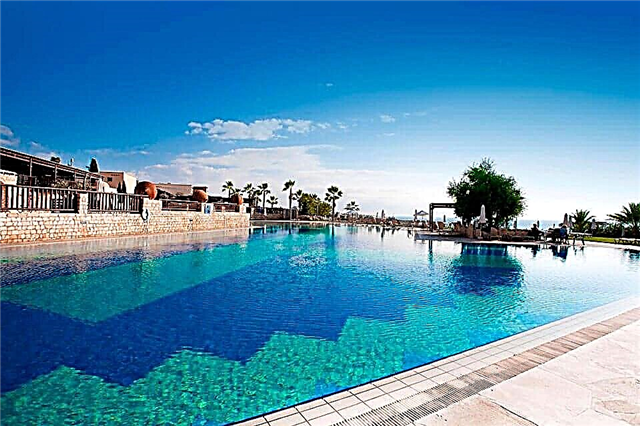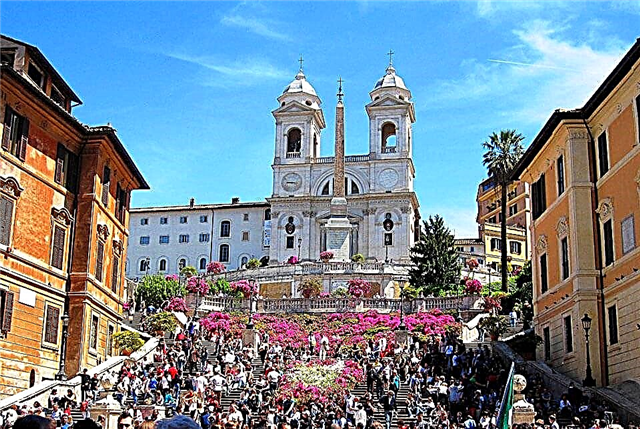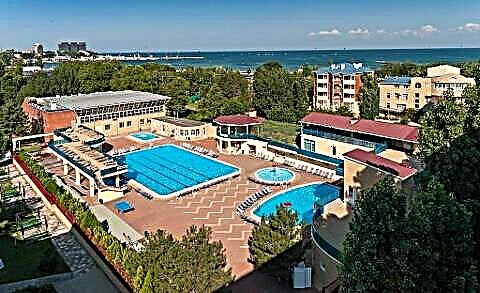A historical and cultural monument of the St. Petersburg interior, characteristic of an aristocratic society, a magnificent ensemble created by the best Russian and foreign masters - the Yusupov Palace in St. Petersburg. The complex has existed for more than 200 years, of which almost a hundred years it belonged to the richest family of the Yusupov counts. And now the architecture of the external appearance and interior decoration delights and surprises with its luxury, delicate taste and grace.
Construction history

On the site of the modern building at the beginning of the 18th century, there was a small wooden estate of the daughter of Ivan IV - Praskovya Ivanovna Romanova. In the mid-twenties, the princess handed over the premises to the Semyonovsky regiment, which owned it until 1742. Then the building was acquired by the courtier of Elizabeth Petrovna - Count A.P. Shuvalov, who at that time was a man of great influence. In the 1770s, Andrei Petrovich began the reconstruction of an obsolete building, which, after the death of Shuvalov in 1789, was inherited by his children - his son and daughter.
The young count built a new home for his family upstream of the Moika River. At the end of the 18th century, Catherine the Great bought the premises and presented it to her maid of honor, Countess A.V. Branitskaya. And in 1830 Nikolai Yusupov became the owner of the estate. Now the magnificent building appears in almost the same form as during the life of the owners, striking the luxury of the facades and the sophistication of the interiors.
Reconstruction
From 1830 to 1838 under the leadership of the architect Mikhailov, a restructuring was carried out, during which the side wings were made three-story. A building with a Banquet Hall was erected on the east side. In the united wings, art galleries and a theater, a dance hall and living rooms were set up. The entrance from the river was decorated with a grand staircase. A garden was laid out around, and garden greenhouses were built. In 1890-1916, the following reconstruction was carried out, affecting mainly the interior. The restoration was supervised by the architect A. A. Stepanova. At this time, sewage, water supply, central water heating, and electricity were installed. The theater was rebuilt, several living rooms and a dining room were equipped.
In the XXI century, the survey revealed a whole range of reasons that could lead to the destruction of the building. A new extensive reconstruction was required. It was important to regulate the temperature and humidity levels, the wrong parameters of which led to the gradual destruction of the monument. This required the restoration of the old ventilation. Scientists have mathematically modeled all the processes occurring in the interior, which made it possible to maintain the desired temperature and humidity with the help of instruments.
The renovation program also included the temporary conservation of the monument, the preservation of the original elements of the facade, which are of artistic and historical value, and the strengthening of the supporting structures. Large-scale renovation work began in 2004 and ended in 2009. During this time, the building of the 19th century was restored. From the northern facade, stained glass windows were installed on the driveway arch, the roof was reinforced and the covering was replaced. Parquet and stone floors were repaired, the historical color of the facade walls, as well as the authentic interior painting were restored.
The assassination of Rasputin

The tragic story of the murder of Rasputin is associated with this place. The odious personality and the terrible death of a person still arouse genuine interest. The future seer was born in the winter of 1869 in one of the villages of the Tyumen district. Grigory Efimovich arrived in St. Petersburg in 1903 and almost immediately was introduced as a holy elder to the imperial couple. It is known that Tsarevich Alexei suffered from hemophilia (a violation of the blood clotting process). This is a hereditary incurable disease, doctors could not help. Only Rasputin, who has the gift of healing, was able to alleviate the child's condition.
As a result, the elder acquired tremendous influence over the tsar and his wife, sometimes interfering in the internal affairs and foreign policy of the state. Over time, he became an omnipotent person who was not denied anything. In addition, he constantly participated in drunken brawls, scandals and orgies, in which even ladies from high society were involved. This defiant behavior caused a sharp negative reaction among the intelligentsia and in court circles. Attempts to influence the royal couple did not give results, this led to a conspiracy, in which five people took part.
Among the conspirators, the tsar's closest relative is Dmitry Romanov and Felix Feliksovich Yusupov, one of the richest and most distinguished people in Russia. According to the developed plan, the elder was to be lured to the Yusupov estate. It was supposed to poison him with cakes with potassium cyanide, and throw the corpse under the ice into a channel flowing nearby. The place was not chosen by chance: it was convenient to get rid of the body here, an invitation to an aristocratic house would not arouse suspicion in the future victim. But things didn't go according to plan.
They brought Rasputin on the night of December 17 and asked him to wait in the basement, which was given the appearance of a secular salon. The guest ate several poisoned cakes, but they had absolutely no effect on him. After which the owner of the house, intending to finish the case, shot at Rasputin. The doctor Lazovert, who came after him, assured that the wound was fatal, it was necessary to wait a while.
Despite the doctor's words, the wounded man woke up, ran out of the house and managed to run a few steps. He was shot two more times - in the head and neck, then the still alive was taken by car to the bank of the Malaya Nevka and thrown under the ice. When the body of the elder was found two days later, it turned out that he was breathing for another seven minutes.
Soviet period
All private possessions by the Soviet government were nationalized after the revolution, including the Yusupov mansion, which was converted in 1919 into a museum of the life of the nobility. In 1925, the museum was closed, and the building itself was handed over to the pedagogical intelligentsia of the city. This helped to keep the interiors in a satisfactory condition. After the closure, almost all of the valuable art objects were transferred to various museums, as a result, many unique exhibits were lost and have not yet been found.
Since 1935, the manor house with adjacent buildings has been included as a cultural heritage monument in the register of the most protected objects. The building was badly damaged during the war as a result of air raids. Immediately after its completion, restoration work began. In the 1990s, a historical and cultural center was formed here, combining excursion, exhibition, concert and other types of educational activities.
The palace today

A lot of creative work is currently underway in the palace complex - you can listen to classical music performed by a symphony orchestra, attend vocal evenings, and watch a performance in the home theater. Various cultural events are held regularly: receptions of Russian and foreign art and culture workers are held, meetings of academic councils are held.
The splendor of the facade of the building and the rich decoration of the interior are attractive for people who wish to hold a wedding, anniversary or corporate party within these walls - here you can rent a beautiful and cozy banquet room. Many people remember the production of "The Murder of Rasputin", which was performed in a small room of a contented gloomy basement, where a bloody crime was committed. It is the place, as visitors recall, that makes it possible to feel the reality of what is happening, giving more drama to the action.
Large-scale museum

The Yusupov Palace is one of the few monuments of architecture and art in Russia, which is quite well preserved - it is an art gallery, ceremonial rooms and luxurious private chambers of the owners. A small home theater is presented in its original form, as well as exhibition rooms, where you can see a large number of original art objects. An interesting exposition is arranged in the basement, where a dark and mysterious murder took place more than a hundred years ago - an exposition with wax figures "Grigory Rasputin: Pages of Life and Death".
The museum still has a lot of interesting things: original paintings, graphics, arts and crafts and musical instruments. Antique furniture imported from Europe. The palace houses a large library with rare books. All exhibits are of particular historical value.
Pedigree of the Yusupovs
In the middle of the 16th century, the sons of the Nogai Khan Yusuf arrived in Moscow to serve Ivan the Terrible. Since that time, Russia has become a home for the Khan's descendants. Men of the clan have always actively participated in the social life of the country, they were military leaders, and held a high position in the hierarchical ladder of the state. One of the khan's great-grandsons converted to Christianity, taking a new name - Dmitry Yusupov, the sovereign granted him the princely title. The son of Prince Gregory was close to Peter the Great, and his grandson, Nikolai Borisovich, was a knight of all orders of Russia.
By the beginning of the 20th century, the family owned almost 50 different estates and estates, four were in St. Petersburg, including one on the Moika. Dmitry's grandson, Felix, after the death of his brother, became the sole heir to a huge fortune. In 1915 he joined the conspirator group, whose goal is the physical destruction of the old man.
Opening hours and ticket prices

The palace is open from 11:00 to 18:00 daily. The stable wing is open during exhibitions from 11:00 to 18:00 (closed on Mondays). In the Church of the Intercession of the Most Holy Theotokos, services are held every Wednesday, beginning at 10:00.
Ticket prices (in rubles):
- for adults - 450
- for students and seniors - 300
Self-examination of the ceremonial premises with an audio guide:
- for adults - 700
- for the privileged category of citizens - 500
Excursions to private chambers:
- adult 550
- for students and seniors - 400

"The Murder of Grigory Rasputin" - exposition:
- for adults - 400
- discount tickets - 300
Interesting thematic excursions are regularly held in the museum.You can find out more about additional events, the time of the event and the cost of tickets on the official website.
Where is it located and how to get there
The palace is located at the address: St. Petersburg, Moika river embankment, house 94.
How to get there:
- by metro to the stations: "Spasskaya", "Sennaya Ploschad", "Sadovaya", "Admiralteyskaya".
- by bus: routes No. 3, 22, 27 to the Teatralnaya Ploschad stop.
- by trolleybus: routes No. 5, 22 to the stop "Palace of Labor".
- by minibus: No К 124, К186, К 350.
Tourists visit the palace to admire the amazingly beautiful interiors, carefully preserved and restored by the painstaking work of St. Petersburg restorers. People are attracted not only by the beauty and splendor of the interior, but also by the mysticism and secrets that envelop the walls of the legendary building.











